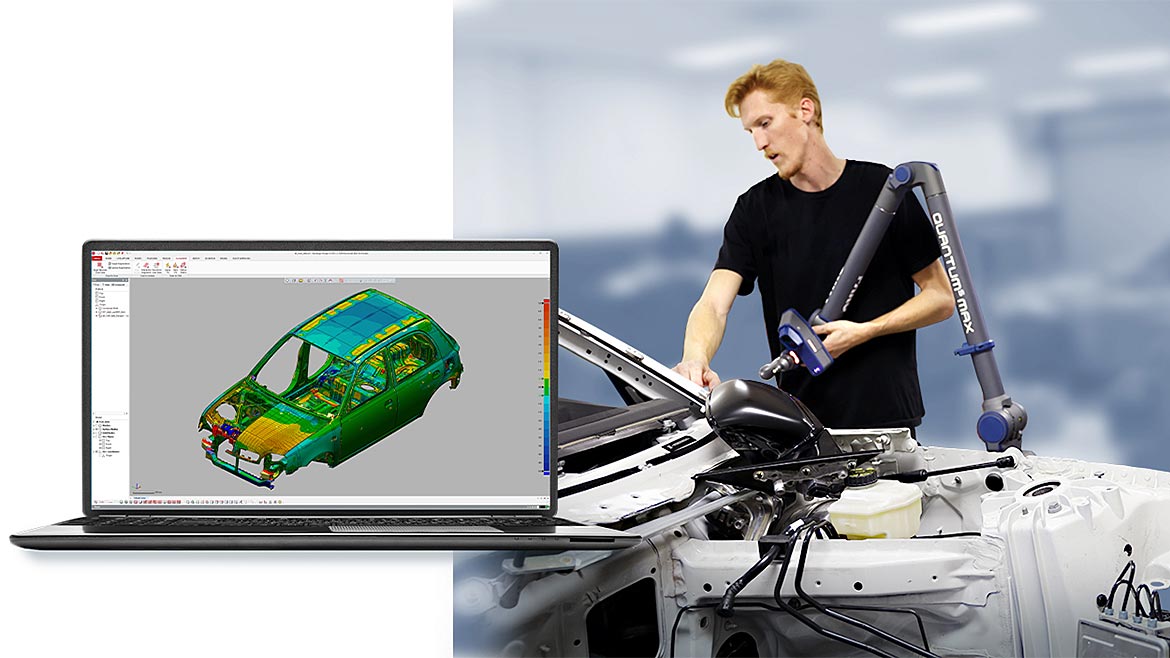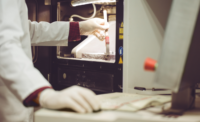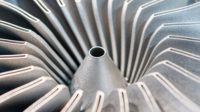In the realm of metrology, where accuracy is paramount, the marriage of 3D scanning technology and additive manufacturing has ushered in a new era of possibilities. By examining the technical nuances of 3D laser scanning hardware and software, we unravel the role they play in shaping the future of engineering.
The Foundation: Understanding Additive Manufacturing
Before dissecting the symbiosis between 3D scanning and additive manufacturing, it’s imperative to comprehend the fundamental principles of the latter. Additive manufacturing — in popular parlance, a term often used synonymously with 3D printing despite the fact there are slight distinctions — is a process that constructs objects layer by layer, directly from digital models. Unlike traditional subtractive methods, such as milling or turning, additive manufacturing adds material only where necessary, resulting in design flexibility and resource efficiency.
Accuracy As The Cornerstone
Additive manufacturing’s efficacy is tied to the accuracy with which digital models are translated into physical objects. This is where 3D scanning emerges as the linchpin, enabling the capture and translation of real-world objects into accurate digital representations.
The Marriage Of Hardware And Software
For 3D scanning to work, there needs to be a good match between hardware and software. High-resolution 3D laser scanning hardware, equipped with advanced sensors and optics, captures intricate details with accuracy. The resulting point cloud data forms the foundation for subsequent manufacturing processes.
Complementing the hardware, powerful software algorithms meticulously process the raw point cloud data, transforming it into a refined digital model. This convergence of hardware and software not only ensures accuracy but also expedites the transition from the physical to the digital realm.

Custom Car Builds: A Canvas For Innovation
The automotive industry, especially in the realm of custom car builds, is an ideal canvas for the innovative fusion of 3D scanning and additive manufacturing. Traditional manufacturing methods struggle to meet the demands of bespoke designs, intricate components, and personalized aesthetics that discerning car enthusiasts seek. 3D scanning, however, acts as a bridge between imagination and reality, offering unparalleled accuracy in replicating and modifying existing car parts or creating entirely new components.
Prototyping And Reverse Engineering
In the realm of custom car builds, prototyping is a critical phase where the vision of designers takes tangible form. 3D scanning facilitates rapid prototyping by swiftly capturing existing components and converting them into digital models. This accelerates the design iteration process, allowing engineers to refine and perfect their creations.
Reverse engineering, another hallmark of 3D scanning, enables the recreation of vintage or discontinued car parts. By scanning an existing part and generating a digital replica, manufacturers can integrate these components into modern custom builds, preserving the heritage of automotive craftsmanship.
Quality Assurance And Tolerance Analysis
Metrology professionals understand the paramount importance of quality assurance in manufacturing. 3D scanning ensures that each layer deposited during additive manufacturing adheres precisely to the digital model. This level of scrutiny is especially crucial in the automotive sector, where components must meet stringent safety and performance standards.
Additionally, 3D scanning aids in tolerance analysis, a process vital for verifying that the manufactured components align with the specified design tolerances. This meticulous examination guarantees that custom car builds not only meet aesthetic expectations but also adhere to the engineering standards synonymous with the automotive industry.
Enhanced Design Flexibility
The marriage of 3D scanning and additive manufacturing liberates designers from the constraints of traditional manufacturing processes. In the context of custom car builds, this translates to unparalleled design flexibility. Complex geometries, intricate textures, and customized features that were once challenging to achieve become feasible through the accuracy afforded by 3D scanning.
The ability to scan and digitize existing components also opens the door to modifying and optimizing designs based on real-world performance data. This iterative design approach ensures that each custom car build is not just a work of art but a testament to functional excellence.
The Top Hardware Challenges
While the synergy between 3D scanning and additive manufacturing offers a myriad of advantages, it is essential to acknowledge and address challenges that may arise. Calibration and accuracy of 3D scanning equipment, data interoperability between different software platforms, and the optimization of scan data for additive manufacturing are areas that demand continuous attention.
Calibration protocols ensure that 3D scanning hardware consistently delivers accurate and reliable results. Regular calibration routines, coupled with advancements in hardware technology, contribute to minimizing errors and maintaining the accuracy and precision demanded by metrology professionals.
Data interoperability is another facet that requires careful consideration. Seamless integration between 3D scanning software and additive manufacturing systems ensures a smooth transition from the digital model to the physical object. Standardization efforts within the industry aim to enhance interoperability and foster a cohesive ecosystem.
Mesh Repair Solutions
Optimizing scan data for additive manufacturing involves strategically addressing issues such as mesh quality, resolution and file formats. Collaborative efforts between 3D scanning experts and additive manufacturing engineers are imperative to streamline this process and ensure that the scan data seamlessly translates into high-quality physical components.
As an applications specialist, I get the opportunity to work with professionals who are trying to identify solutions to the specific challenges they face in their additive manufacturing process. One of the most common areas I see people needing help in 3D printing is during the mesh repair process. With this in mind, here are the top best-practices I recommend when working through mesh repair challenges.
The Ideal 3D Printing Mesh Repair Process:
- Identify Issues: Use the error-checking tool to identify any problems in the mesh. Common issues include non-manifold geometry (where edges or vertices aren’t correctly connected), holes or intersecting surfaces.
- Repair Non-Manifold Geometry: Non-manifold edges can cause printing errors. Use the software’s tools to repair these issues by closing gaps, connecting edges or filling holes manually.
- Hole Repair: If there are holes in the mesh, use the software’s tools to fill them. You can often find an automatic “hole filling” feature that tries to bridge gaps in the mesh.
- Check and Simplify Geometry: Sometimes, complex geometry can cause problems during printing. Simplify the mesh, if possible, without compromising the details you need in the final print.
- Recheck for Watertightness: After repairs, re-run the error-checking process to ensure the model is now watertight and ready for 3D printing.
- Export Corrected STL: Save the repaired model as an STL file, ensuring that it retains the corrections you’ve made.
Final Considerations:
- Scale and Orientation: Before printing, ensure the model is scaled correctly and oriented properly on the print bed to avoid printing issues.
- Printer-Specific Checks: Some printers or slicing software have their own tools for checking and repairing models. Familiarize yourself with the specific requirements of your printer or software.
When a specialist takes all of these considerations into account, they’ll set themselves up for a smoother overall 3D printing process. And as the industry evolves, the significance of 3D scanning in additive manufacturing will become increasingly evident.
Anyone can buy a 3D printer and set up a shop. But, as outlined here, there are a few essential details to take into consideration to optimize an additive manufacturing process. Today, metrology professionals find themselves at the forefront of a transformative era, when accuracy and precision are converging with engineering and creative freedom.








